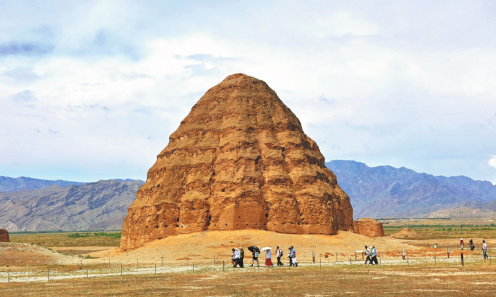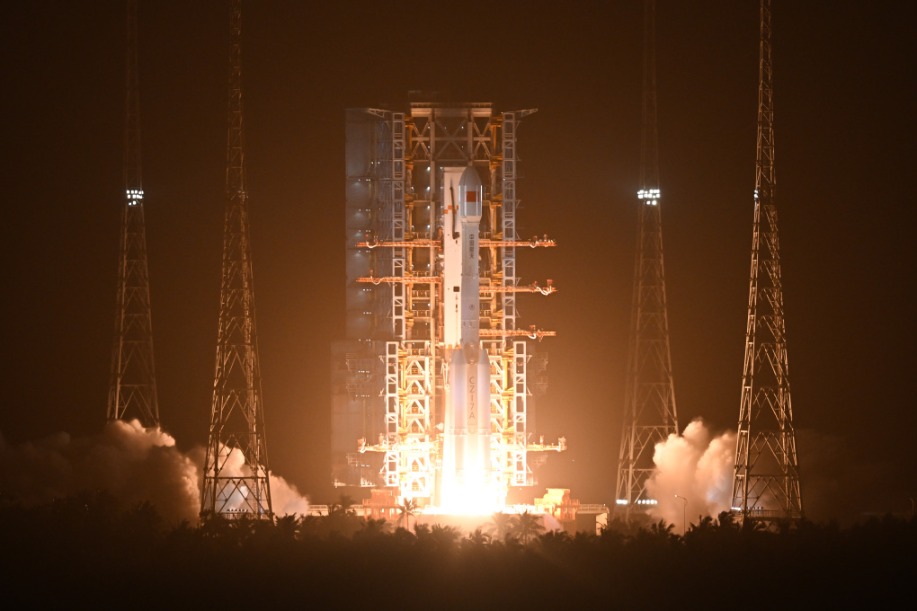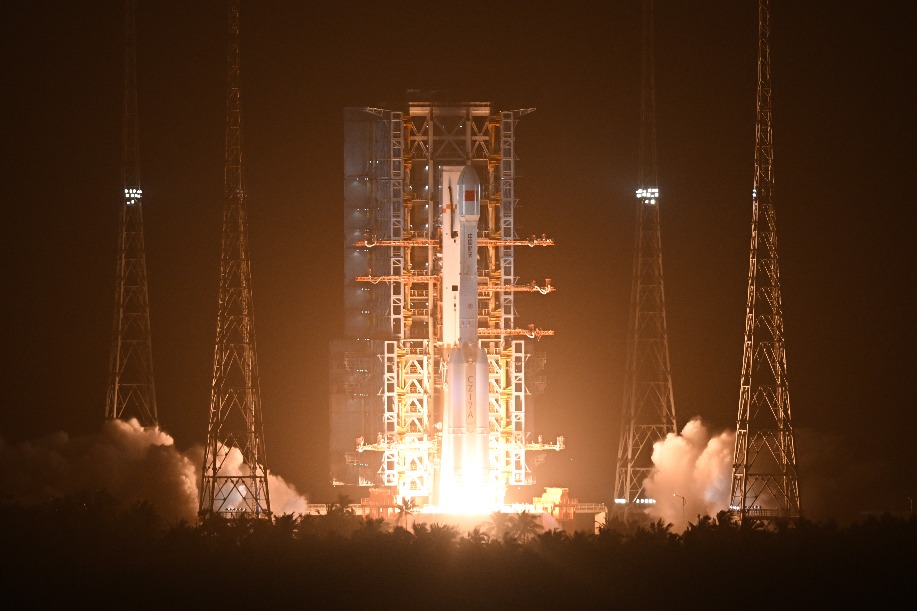Xixia Imperial Tombs added to World Heritage List





A millennium-old tomb complex in Northwest China has received global recognition for its outstanding universal value.
The Xixia Imperial Tombs site was added to the World Heritage List on Friday, during the 47th Session of the World Heritage Committee of UNESCO in Paris, becoming China's 60th World Heritage site.
Located on a proluvial fan by the eastern foothills of the Helan Mountains, the tomb complex in Yinchuan, Ningxia Hui autonomous region, is the largest, highest-ranked, and most intact archaeological site of the Xixia Dynasty (1038-1227).
Established by the Tangut people and home to various ethnic groups, the dynasty once governed an area of 1.15 million square kilometers at its peak time.
Within 3,899 hectares of property zone, the inscribed property was comprised of nine imperial mausoleums, 271 subordinate tombs, 32 flood control work sites, and a 5.03-hectare architectural complex site to their north.
Rao Quan, director of the National Cultural Heritage Administration, said at the 47th session, that China will work to ensure the outstanding value of the tombs will be widely disseminated and perpetually inherited.
The committee stated that the complex bears a unique testimony to the Xixia Dynasty and its imperial lineage in the history of China, and attests to Xixia's crucial role as a distribution center on the Silk Road during the 11th to 13th centuries.
It also highlighted that the site fully exhibits the cultural fusion and innovation resulting from interactions among diverse ethnic groups, modes of livelihood, and cultures in the agro-pastoral interlaced region situated between the Mongolian Plateau and the Qinghai-Tibet Plateau and centered on the Ningxia Plain in northwestern China.
Such fusion was no accident, as Xixia was in a key era of political standoff and cultural communication in China from the 11th to 13th centuries. At that time, the Song Dynasty (960-1279) ruled central and southern China. Khitan and Jurchen peoples successively established the Liao (916-1125) and Jin (1115-1234) dynasties to the north.
Originating from the Qinghai-Tibet Plateau, the Tangut did not traditionally build tombs but later adopted the practice under the influence of the farming civilization of the Tang (618-907) and Song dynasties, said Du Jianlu, a history professor on Xixia studies at Ningxia University.
"Therefore, the existence of the Xixia Imperial Tombs was the result of cultural communication," he explained.
While drawing from others' traditions, Xixia people also infused their own creations. For example, the Xixia tombs are all basically symmetrical along an axis, which is a tradition of China's Central Plains. But Xixia people also departed from this norm by placing the sacrificial hall, the mound above the tomb passageway, the burial chamber and the pagoda to be located along another skewed line.
Zheng Jun, a researcher of the China Academy of Cultural Heritage, who is also a World Heritage consultant for the International Council on Monuments and Sites, said: "The World Heritage sites created by different ethnic groups of China, including the Xixia Imperial Tombs, are the shared historical memory of the Chinese nation.
"They all illustrate that Chinese civilization is the collective creation of all ethnic groups of the country."
Archaeological studies and preservation efforts at the site started in the 1970s. Since 2012, China's National Cultural Heritage Administration has included the Xixia Imperial Tombs on the preparatory list of applying for World Heritage status and local governments also helped develop a comprehensive protective system and rules to ensure its proper management.
The World Heritage Committee praised China's efforts on the protection and management of the complex, mentioning the legal framework enacted to protect it, the protection and management mechanisms and the research on earthen sites protection which have helped to maintain the site's authenticity and integrity.
This year also marks the 40th anniversary of China's entry into the Convention Concerning the Protection of the World Cultural and Natural Heritage.
Rao said: "The Chinese government will faithfully fulfill the convention, consolidate the comprehensive and systematic protection of cultural and natural heritages and improve the protection abilities and levels.
"China would like to share its experience and cases in this area and offer professional and technological support to other countries, working together to safeguard the cultural treasures of humanity."

Today's Top News
- New engine powers cargo drone expansion
- China to boost intl cooperation on green tech
- Factory activity sees marginal improvement in November
- Venezuela slams US' 'colonial threat' on its airspace
- Xi: Strengthen cyberspace governance framework
- Takaichi must stop rubbing salt in wounds, retract Taiwan remarks


























